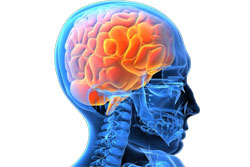Historically, the defining features of inflammation include rubor (redness), calor (warmth), tumor (swelling), and dolor (pain), and there is a distinction between acute and chronic inflammation. Acute inflammation compromises the early response to an injurious agent and is a defensive response that fosters repair of the damaged site. Chronic inflammation results from stimuli that are persistently damaging to tissues. Inflammation is a way that the body reacts to infection, irritation, or other injury and is considered a nonspecific immune response. The inflammatory response directs immune cells to the site of injury or infection and is manifested by an increased blood supply coupled with vascular permeability. Microorganisms (i.e., bacteria, viruses, fungi) are then engulfed by neutrophils and macrophages (types of white blood cells) in an attempt to contain the infection to a smaller tissue space.
Systemic Inflammation and Cytokines
However, Lyme Disease can involve multi-organ systems rendering an inflammatory state that is a more generalized condition. Proinflammatory cytokines (chemical messenger molecules) are released by immune cells in response to a pathogen which in turn causes inflammation in the joints, muscles, heart, brain, gastrointestinal system, and urinary system. Spirochetes have an affinity for both collagen tissue and tissues that contain fatty acids (i.e., the brain), and bury deep within these substrates to avoid detection by the hosts’ immune system. This is one of the reasons why capturing the DNA (PCR test) of these microorganisms remains difficult because they simply don’t dwell in the blood. Hence, measuring the immune system’s antibody response to the pathogen(s) is the best choice for demonstrating pathogen exposure and infection.
Inflammation becomes particularly concerning when the brain is involved. Microglial cells (immune cells of the brain) become activated in response to an insult or injury and cause localized inflammation. When spirochetes reach the brain, an immune response is activated and inflammation occurs. Patients experience the feeling of swelling in their head or eyes or pressure in their head. This may also be the result of increased intracranial pressure secondary to infection and inflammation.
When the microglial cells of the brain become activated, a particular brain biochemical pathway known as the “kynurenine pathway” becomes involved and the production of a highly toxic molecule known as “quinolinic acid’ results from the metabolism of the amino acid tryptophan. Quinolinic acid can be thought of as equivalent to “battery acid” in the brain where it literally causes neuronal destruction through increased free radical production as is observed in Multiple Sclerosis, Parkinson’s Disease, Alzheimer’s Disease, and ALS.
There are many natural therapies to combat inflammation and help minimize the effects of quinolinic acid in the brain. This will result in less brain fog, confusion, a recovery of memory and function, and greater mood stability. I have been working with this paradigm for quite some time with great success. The general idea is to DECREASE inflammation so that tissue damage is minimized and nutritive healing takes place. An analogy here is the following: when a person becomes heated and angered, they are less likely to receive the opinion of an opponent. Likewise, when tissues are inflamed, they are less likely to properly receive and utilize nutrients, water, and metabolize medications. In essence, inflamed tissues are unable to perform adequate metabolic functions for optimal organ health.



